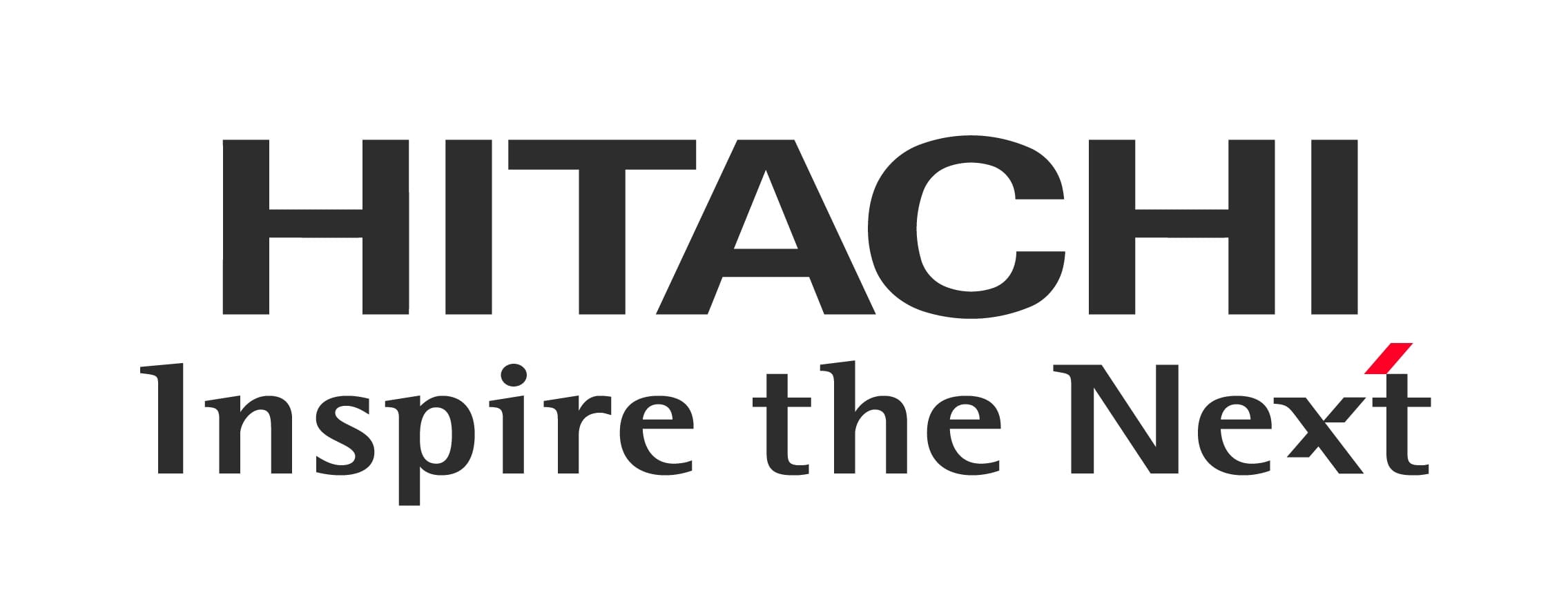TECH SHOWCASE
Category
FUKUSHIMA
About Restoration of Fukushima Click here
Energy
-

Construction of Zero Carbon Building "T-ZCB"and Development and Overseas Marketing of New Technologies for Decarbonization
TAISEI is constructing Japan's first Zero Carbon Buildings and accelerates buildings GX with decarbonization technology.
Zero Carbon Buildings under construction (Taisei Group Next-Generation Technology Research Institute)
Scheduled to be completed in autumn 2025T-Green®MultiSolar
The building integrated photovoltaics (BIPV) panel that can be installed on facades (window and wall surfaces)
Perovskite See-Through Module(Development Product)TAISEI CORPORATION is constructing Japan's first Zero Carbon Buildings by introducing advanced construction materials and technologies. We are promoting Zero Carbon Buildings and contributing to decarbonization in urban cities through our technologies that achieve net-zero CO2 emissions in the building life cycle.
T-Green® Multi Solar, a revolutionary exterior system that combines lighting, power generation and design, can be used in new and renovated buildings of various sizes, such as office building exterior and balcony. T-Green® Multi Solar has been introduced to a factory in Thailand and an office development project in Vietnam taking advantage of Joint Crediting Mechanism (JCM).
KANEKA CORPORATION, a co-developer, is developing a "tandem type" solar cell that combines crystalline silicon with perovskite solar cells, which are expected to be the next generation. This combination aims to exceed the conversion efficiency of existing crystalline silicon solar cells.
T-eConcrete® can achieve CO2 balance “Negative” in the manufacturing process by fixing CO2 inside the concrete material. This contributes to Zero Carbon Buildings.Implementation Report
We engaged with 500+ visitors from 60+ countries. We received inquiries about technology adoption, for example, from consultants involved in Turkish government building renovation, to be our new business opportunity. Additionally, we were invited to a seminar to join a meaningful discussion. Thus, we successfully promoted Japanese decarbonized building construction technologies to spread globally.
-
On-site Showcase Booth -
Explaining to Palau President Whipps -
Explaining to the IEA delegation -
Interviewed for COP29AZ Official YouTube
-
-
Panasonic Holdings Corporation
RE100 Solution by Coordinated Management of 3 Types of Batteries
RE100 Solution with Supplies 100% of Electricity Consumed in Business Activities from Renewable Hydrogen and Solar Energy
Demonstration facility [H2 KIBOU FIELD] , Kusatsu city, Shiga , Japan, launched in April, 2022 Demonstration facility of RE100 Solutions at UK factory (Plan)
Deploying solutions tailored to regional characteristicsAt RE100 demonstration facility "H2 KIBOU FIELD" in Kusatsu, Shiga since April 2022, combining pure hydrogen fuel cells, solar cells and lithium-ion storage batteries, 100% of energy of operation is successfully covered by renewable energy (RE100) to accumulate know-how to operate RE100 factory by managing these 3 batteries adjusting to weather and operation. Since July 2024, we started additional experiment trying to use heat generated during power generation by pure hydrogen fuel cells as heat source for absorption chillers.
At COP29, we will showcase activities at the UK (Cardiff) factory of microwave ovens, aiming at effective utilization of energy to improve overall energy efficiency with 3-battery manaement plus generated heat for hot water and heating systemImplementation Report
Our exhibit attracted a variety of people, including government officials from various countries, companies, academics, and NGOs. Many people expressed interest in hydrogen and waste heat utilization. In particular, we received many comments from government officials to deploy this kind of solution in their countries, and thus it became a good opportunity for our solutions to be widely recognized.
-
Explaining to Mr. ASAO, Minister of Environment -
Explaining to Ms. KOIKE, Governor of Tokyo -
Interview by CBC TV Azerbaijan news
-
-

Decarbonization Technologies Contributing to Green Transformation
Japan's most advanced (1) Innovative H2 production & power generation technologies and (2) CCUS solutions
Takasago Hydrogen Park: World's largest hub for integrated hydrogen production, storage, and utilization for technology validation and scaled commercial operation. MHI Group's CCUS value chain - (1) Innovative Hydrogen (H2) Production & Power Generation Technologies: MHI promotes development of H2 combustion combustors and demonstration in actual plants to promote H2 conversion in natural gas-fired power plants as an approach to decarbonizing existing infrastructure. Large gas turbines that only burn H2 are expected in 2030. MHI is also focusing on development of H2 production technologies, because the supply side is essential.
- (2) CCUS Solution: To realize decarbonized society, in addition to CO2 reduction, capture, transport, and storage of emitted CO2 (CCUS) is necessary. MHI Group has a wide range of products and services in CCUS value chain, such as CO2 Capture System, LCO2 Carrier, and Compressor to contribute to early realization of carbon neutrality.
Implementation Report
In addition to our appearance at discussions at three seminars, the exchange of views with government officials and VIPs on energy and climate issues at the showcase, enabled MHI to present to the world our cutting-edge decarbonization technologies ((1) Innovative Hydrogen Production & Power Generation Technologies; and (2) Advanced CCUS Solutions) contributing to green transformation.
-
Our Mr. MATSUDA Invited to Speak at METI Seminar -
Our Prof. Kakaras Presenting at Keidanren Seminar. -
Palau President at Our Booth -
Explaining to Environment Minister ASAO
CCUS
-

Practical CO2 Separation, Conversion and Utilization from Manufacturing Boilers
CO2 Emission Captured by Separation Membranes, Then Converted into Valuable Resources, Contributing to CO2 Reduction
Nitto aims to reduce CO2 emissions by using separation membranes to capture CO2 from factories and convert it into valuable resources, and to challenge negative emissions by DAC technology. CO2 separation membrane is in pilot-scale demonstration, and commercial-scale demo is planned by 2026. CO2 conversion will be expanded to 10 t/year-scale in 2026, utilizing biogas-derived H2 and CO2. With declaration of Net-Zero for CO2 emissions reduction in May 2022, Nitto Group began building and demonstrating a decarbonization system as part of its environmental contribution products and services toward realization 2050.
Targeting fossil fuel-derived boilers, the system uses separation membranes to highly concentrate and recover CO2 in exhaust gas, then converted to formic acid, which is mainly used as an additive in animal feedstock and as a tanning agent for leather. The system also envisions the development of DAC using waste heat.
CO2 Separation Membrane, Conversion, and DAC are Nitto's inventive technologies that incorporate its accumulated know-how. We believe this offering of sysem with this combination will provide a total solution for CO2 reduction.
Implementation Report
Many global leaders visited our booth and are interested in our CO2 separation, capture, conversion and utilization technology. With hands-on display of CO2 separation membrane sheets & mini-modules to touch and demonstration of CO2 concentration using membrane sheets, we believe the visitors successfully deepen their understanding of our technology. Valuable information and opinions are received.
-
Display with actual items, demonstrations and videos -
Explanation to three groups at a time -
Interview by Azerbaijan Media -
Interview by France Media
-
-

Net-Zero CCS Solutions: R&D and Demo of CO2 Ship Transportation and Geological Storage
Contribution to Net-Zero by Research, Development & Demonstration: CO2 Ship Transportation Technology Development & Tomakomai CCS Demonstration Project
Inland facility and demonstration ship: taking on challenge of large-volume transport technology development by transporting LCO2 at various conditions and identifying optimum CO2 transport condition. In Tomakomai Project, monitoring of formation pressure, temperature, seismicity, marine environmental surveys, seismic surveys are being carried out to confirm safe storage of the injected CO2. Japan CCS Co., Ltd. (JCCS) will introduce two projects commissioned by NEDO.
- ・Integrated CO2 Ship Transportation Technology Development Project - Conducted by JCCS, ENAA, Itochu, NGL, efforts of LCO2 (Liquified CO2) ship transportation technology development and demonstration will be communicated. Ship transportation test of low temperature/pressure LCO2 is world's first endeavor, aiming for safe, low-cost, large-volume transportation.
- ・Tomakomai CCS Demonstration Project - Japan’s first integrated CCS project, achieved 300,000 tonnes CO2 storage. Monitoring is being continued. The results of long term monitoring including pre-, during and post- injection monitoring will be introduced to communicate safety and reliability of CO2 geological storage in the project to the world.
Implementation Report
JCCS introduced the NEDO projects to nearly 400 international visitors, including government officials, researchers, and business people. Visitors showed interests in mechanism and safety of CCS and in international cooperation and unanimously expressed expectations towards information from JCCS. We successfully promoted our presence/information as a CCS-related technology provider to the world.
-
Explaining to Ms. KOIKE, Governor of Tokyo -
Explaining to Mr. ASAO, Minister of Environment -
H.E. Mr. NYSSANBAYEV, Minister of Ecology and Natural Resources of Kazakhstan -
Disseminating latest Japanese technology
Circular economy
-

Glass Recycling Including Solar Panels And Efforts for Circular Economy
Recycling of solar panel cover glass reduces industrial waste, natural resource use and greenhouse gas (GHG) emissions
(left) Broken cover glass from PV panels as was collected. (With contaminants mixed in, it is difficult to recycle as it is)
(right) Flat cover glass separated from PV panel
(Easy to recycle)(Left) Various types of waste glass
(Right) Building constructed using recycled glassHundreds of thousands of tons of solar panels are expected to be disposed of annually in the future, and recycling of cover glass, with 60% weight ratio, is a serious social issue. Having identified the causes inhibiting recycling in float-process, AGC worked with PV recyclers to ensure that the glass is properly separated, and finally succeeded in recycling. Building flat glass, being produced in high volume, is expected to serve as a suitable outlet for the horizontal recycling of cover glass. This initiative helps to conserve raw materials derived from natural resources and to reduce greenhouse gas (GHG) emissions in its production processes.
Aiming to realize the circular economy in the supply chain, AGC is working with various partners to recycle glass.Implementation Report
We welcomed visitors from various countries and shared consciousness to the solar panel disposal issues. They were also interested in utilization of natural resources and the challenges in GHG emissions reduction during glass production and our countermeasures. We will continue advancing our activities & R&D with stakeholders in global glass recycling, waste reduction, and GHG emission reduction.
-
AGC Showcase -
Explaining to Minister ASAO Keiichiro -
Welcomed Visitors from Various Countries -
Our "Public Relations Manager"
-
-
Kanadevia Corporation
Innovative Waste Management to Achieve Circular Economy & Net-Zero GHG Emissions
"Waste to X" System Package That Uses Renewable Energy to Circulate Waste as Energy and Resources
If landfilled directly, waste generates methane (CH4), having greenhouse effect 28X more than CO2. So, switching from direct landfill to waste to energy (WtE) will significantly reduce GHG emissions. With our WtE, CH4 fermentation, CO2 capture, wind power, solar power, desalination, H2 generation and methanation technologies, resource recycle of water, electricity, H2, O2, CH4 and CO2 is realized. One solution to pursue decarbonisation and circular economy in waste management systems is to move from landfill to incineration power generation, and to capture CO2 and convert it to e-methane with clean hydrogen. To realize this solution, we, KANADEIVIA Corporation, present an innovative waste management system that combines waste-to-energy, methane fermentation, wind power, desalination, hydrogen generator, methanation and efficient CO2 capture technologies in a package of existing and developing technologies. Hydrogen Generator produces oxygen and hydrogen, oxygen is fed to waste incineration for highly efficient CO2 capture, while hydrogen is converted to e-methane through a methanation reaction with the recovered CO2.
Implementation Report
We exhibited models, panels, and videos of waste management system for circular economy and net-zero. We enjoyed over 1,000 visitors from 123 countries, who showed a keen interest in decarbonization in the waste sector. By exhibiting various waste treatment technologies, we successfully proposed solutions that contribute to climate change mitigation tailored to the situation in each country.
-
Appearance of Booth -
Explaining to officials of The Philippines -
Explaining to Visitors 1 -
Explaining to Visitors 2
-
Adaptation
-

Geospatial Data Platform Capable of Detecting and Analyzing Environmental Changes and Risks
Everybody's platform to visualize environmental changes & risks utilizing various data including satellite information.
Methods are being developed to detect and identify various environmental changes and risks by integrating diverse data, including satellite information, along with a platform to utilize the data. The platform aims to provide a web-based intuitive user interface that allows anyone to use it without the need for specialized knowledge in satellite data analysis or geospatial information. ArkEdge Space Inc. aims to "Empower people with satellites for a prosperous future" by offering a wide range of services, from mass production of various types of small satellites to providing satellite-based solutions.
We are developing methods to detect, identify, and analyze environmental changes and risks by combining data from various satellites and ground sensors. Additionally, by leveraging advanced web technologies and AI, we are developing a geospatial information platform that automatically collects, processes, and analyzes diverse data, enabling everyone, even non-experts, to easily visualize key information through simple operations and help businesses assess and disclose natural capital risks and opportunities, as well as support conservation efforts.
Implementation Report
Many global leaders visited our booth expressing interest in our technology and platform, and we enjoyed exchange of information and received valuable insights.We also received popular attention, including interview by numerous domestic/international media and invitation to speak at UNDP's Panel Discussion. We will leverage this network to further advance initiatives agianst challenges worldwide.
-
Explaining to Environment Minister ASAO -
President of Palau Visiting Our Booth -
Media Coverage by Numerous Media -
Invited to Speak at Panel Discussion at UNDP
-
-

Adaptation Technology for Physical Risks in Water Cycle Simulator GETFLOWS
Showcasing Technology to Adapt to Physical Risks Using Innovative Software “GETFLOWS” with Projection-Mapped Drought Simulation.
GETFLOWS can be used to estimate recharge volume by analyzing changes in precipitation and evaporation rates due to heavy rains and droughts. Data from radar rain gauges is read in real-time, runoff is calculated using a physical model, and water level rise is predicted. GETFLOWS is characterized by full coupled analysis that enables surface water and groundwater interaction analysis, which was previously difficult, and is one of Japan's cutting-edge technologies. A model of the real world is created in a computer, and surface water and groundwater are calculated simultaneously to calculate river flow, groundwater reserves, water budget, etc.
When applied to climate change adaptation, GETFLOWS is a physical model that does not use runoff coefficients, so it is expected to predict runoff with higher accuracy than conventional methods. Drought forecasts can estimate time changes in groundwater reserves and soil moisture, sections below the river minimum water level, and risks and impacts on living thing when the water source is groundwater.Implementation Report
From Asian monsoon countries to arid countries, various parties interested in adaptation technology visited our booth every day with keen interests in the results of drought simulations and global water cycle analysis. In particular, we proposed advanced use of groundwater, through like water budget analysis, to parties with water supply issues such as desert and island countries.
-
Explaining Water Cycle Analysis to UAE Officials -
Visit by Libyan Official -
Explaining to Parliament Members and Ambassador -
Results of Global Water Cycle Analysis
-
-
Japan Consortium for Adaptation Finance
Visualization and Quantification DX and Finance Model of Adaption Value DX
Adaptation Value DX to Encourage Private Investment in Adaptation Projects That Can Respond to Increasing Disasters
Japan Consortium for Adaptation Finance applies to quantify the disaster mitigation/environmental benefits that constitute adaptation value, and based on this, proposes adaptation finance approaches. While the introduction of mitigation measure against climate change has been progressed recently, the introduction of adaptation measures (mainly disaster prevention) has not. Although the amount of funding introduced into adaptation measures itself has increased to an all-time high, 98% of it is public funding.
We believe that the lack of clarity on "adaptation value" - the difference between the economic and environmental benefits before and after the implementation of adaptation measures - and the inability of the private sector to determine return on investment is a barrier to the flow of funds into adaptation measures. We will use "adaptation value" visualization/quantification techniques developed by us to promote private sector investment in adaptation measures.Implementation Report
We discussed disaster prevention measures with key figures from private companies, governments, and public institutions in Japan and abroad. Government officials from Asia and the Middle East showed interest in measures, noting the challenges of implementing them solely by governments. They expressed interest in financial mechanisms involving the private sector and international organizations.
-
Adaptation Finance Consortium Booth -
Display Screen -
Explaining to Tokyo Governor KOIKE -
Explaining to Environment Vice Minister of UAE
-
-

Flood Simulation and Distributed Control of Data Center for Climate Adaptation
Aiming to Achieve a Positive Impact for People and the Planet as a Climate Change Innovator
Simulates events from rainfall to flooding. By automatically-created simulation models from map data and with predicted rainfall, river water level and areal flooding changes over time are forecasted. Supports DC sustainability, energy cost reduction and decarbonization. Established basic technology for distributed control of cross-regional DC workloads in joint research with TEPCO Power Grid, Inc. As climate change exacerbates flood disasters, adaptation is becoming ever more important. This exhibit showcases flood simulation technology and distributed control technology for data center (DC) workloads for a more disaster-resilient, decarbonized society.
Flood simulation:
- Predicts river water levels and areal flooding based on cloud radar and rainfall information. Identifies risk areas to support emergency planning and flood-resistant urban planning.
Distributed Control of Data Center (DC) Workloads:
- Controls cross-regional DC workloads.
- Optimizes energy supply-demand balance by adjusting workloads to utilize power surpluses from regional renewables, to fully utilize renewables and reduce CO2 emissions.
Implementation Report
The interactive demonstrations allowed visitors to obtain a deep understanding of the important role of our technologies. Seeing the high level of interest in climate change adaptation from both developed/developing countries is a significant accomplishment for us. We also felt a high level of expectation towards Japanese technology, as well as the importance of engaging with stakeholders at COP.
-
Hitachi Booth -
Interactive Demonstrations Focused on Adaptation -
Explaining to Environment Minister ASAO Keiichiro -
Explaining to visitors
